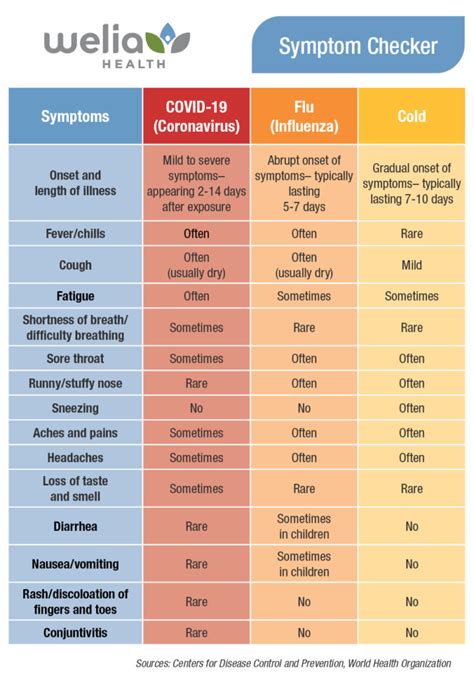The terms “cold,” “flu,” and “COVID” are often used interchangeably, but they refer to distinct respiratory illnesses caused by different viruses. Understanding the differences between these conditions is crucial for proper diagnosis, treatment, and prevention of complications. Here, we’ll delve into the specifics of each condition, explore their symptoms, and discuss how to differentiate between them.
Cold
The common cold is a viral infection that affects the upper respiratory system, including the nose, throat, and lungs. It’s usually caused by rhinoviruses, but other viruses like coronaviruses, adenoviruses, and respiratory syncytial viruses can also be responsible. The symptoms of a cold can vary but typically include:
- Runny or stuffy nose
- Sneezing
- Cough
- Sore throat
- Headache
- Fatigue
- Muscle aches
- Loss of appetite
Colds are generally mild and self-limiting, meaning they resolve on their own with rest, hydration, and over-the-counter medications to manage symptoms.
Flu (Influenza)
The flu, or influenza, is a contagious respiratory illness caused by influenza viruses. It can affect anyone, but certain groups like the elderly, young children, and people with compromised immune systems are at higher risk of developing severe illness. Symptoms of the flu can come on suddenly and may include:
- High fever
- Chills
- Cough
- Sore throat
- Runny or stuffy nose
- Headache
- Fatigue
- Muscle or body aches
- Diarrhea and vomiting (more common in children)
Unlike the common cold, the flu can lead to serious complications such as pneumonia, bronchitis, sinus and ear infections, and exacerbation of chronic health conditions like heart disease, diabetes, and asthma.
COVID-19
COVID-19 is an infectious disease caused by the SARS-CoV-2 virus. It was first identified in late 2019 and has since caused a global pandemic. The symptoms of COVID-19 can range from mild to severe and include:
- Fever or chills
- Cough
- Shortness of breath or difficulty breathing
- Fatigue
- Muscle or body aches
- Headache
- Sore throat
- Runny nose or stuffy nose
- Diarrhea
- Nausea or vomiting
- New loss of taste or smell
Some people may experience severe illness with symptoms such as trouble breathing, persistent pain or pressure in the chest, severe headache, or confusion. These symptoms require immediate medical attention.
Symptom Checker
If you’re trying to determine whether you have a cold, flu, or COVID-19 based on your symptoms, here’s a general guide:
- Duration and Onset: Colds tend to develop gradually over a few days, while the flu and COVID-19 can come on more quickly.
- Fever: High fever is more common with the flu and COVID-19 than with a cold.
- Cough and Shortness of Breath: These symptoms can occur with all three, but are generally more severe with the flu and COVID-19.
- Loss of Taste and Smell: This symptom is more unique to COVID-19.
- Body Aches: While these can occur with both the flu and COVID-19, they are often more pronounced with the flu.
However, the only way to definitively diagnose between these illnesses is through medical testing. For COVID-19, this typically involves a nucleic acid amplification test (NAAT) or an antigen test. For the flu, it may involve a rapid influenza diagnostic test (RIDT) or other influenza tests.
Prevention and Treatment
Preventing the spread of these illnesses involves similar strategies:
- Vaccination: Getting vaccinated against the flu and COVID-19 can significantly reduce the risk of infection and severe illness.
- Hand Hygiene: Washing your hands frequently with soap and water or using hand sanitizer.
- Mask Wearing: Wearing a mask in crowded areas or when around individuals who are sick.
- Social Distancing: Maintaining physical distance from others to reduce the chance of close contact with someone who might be infected.
- Avoiding Close Contact: Avoiding close contact with people who are sick.
Treatment for these conditions focuses on relieving symptoms and, in the case of the flu and COVID-19, may include antiviral medications prescribed by a healthcare provider.
Conclusion
While the common cold, flu, and COVID-19 share some similar symptoms, they are distinct conditions with different causes, symptom profiles, and potential complications. Understanding these differences and taking appropriate preventive measures can help protect against these illnesses. If symptoms persist or worsen, seeking medical evaluation is crucial for proper diagnosis and treatment.
What are the main differences in symptoms between a cold, flu, and COVID-19?
+The main differences lie in the onset, severity, and specific symptoms. Colds tend to develop gradually and are generally milder. The flu comes on quickly and can include high fever, severe body aches, and cough. COVID-19 symptoms can range from mild to severe and include fever, cough, shortness of breath, and a new loss of taste or smell.
How can I prevent the spread of these illnesses?
+Prevention involves vaccination against the flu and COVID-19, frequent hand washing, wearing masks in crowded areas or around sick individuals, maintaining social distancing, and avoiding close contact with people who are sick.
What should I do if I think I have the flu or COVID-19?
+If you suspect you have the flu or COVID-19, it’s essential to consult with a healthcare provider. They can provide a proper diagnosis through testing and recommend appropriate treatment, which may include antiviral medications.



